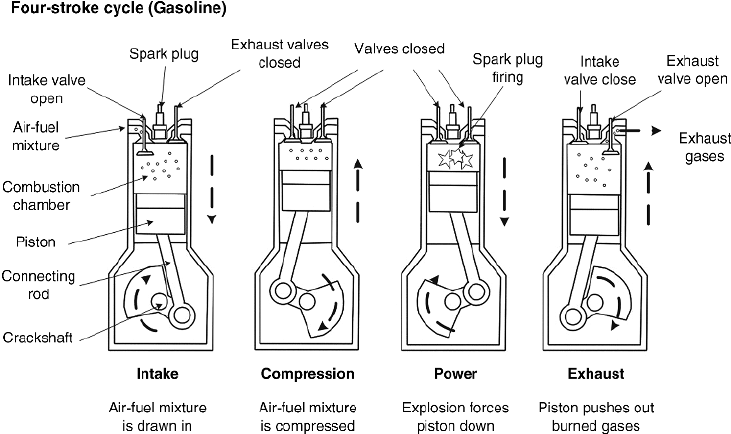Otto cycle

The Otto cycle is a thermodynamic cycle that describes the operation of an internal combustion engine, particularly in gasoline-powered engines. It's named after Nikolaus Otto, who developed the concept in the 19th century.
Here’s a breakdown of how the Otto cycle works:
Intake Stroke: The intake valve opens, and the piston moves down, drawing in a mixture of air and fuel.
Compression Stroke: The intake valve closes, and the piston moves upward, compressing the air-fuel mixture. As the mixture compresses, its temperature and pressure rise.
Power Stroke: When the piston reaches the top of the compression stroke, the spark plug ignites the compressed air-fuel mixture, causing a small explosion. This rapidly increases the pressure in the cylinder, pushing the piston down.
Exhaust Stroke: The exhaust valve opens, and the piston moves up again to expel the burnt gases from the combustion chamber.
This cycle repeats, powering the engine and generating mechanical energy.
The efficiency of an Otto cycle engine depends on the compression ratio (the ratio of the maximum to minimum volume of the cylinder). The higher the compression ratio, the more efficient the engine is, but it can also lead to knocking (pre-detonation), which is why higher compression ratios are generally used in high-performance or premium fuel engines.